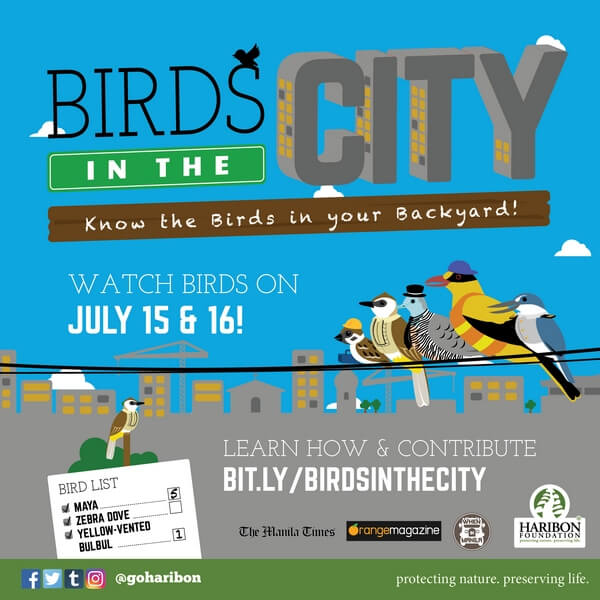Cars honk in traffic. Students and workers join the frantic morning rush. A new condo is about to rise along the street corner.
Everything is loud, fast-paced and instant in a busy concrete jungle – that we rarely pay attention to and appreciate the nature immediately around us.
Over the last decades, urban spaces have grown and replaced our natural landscapes. Many species, including birds, have disappeared from the countryside but others have survived and adapted well to cities.
Taken for granted
Urban birds are a common group of birds. We see them almost anywhere – mayas perched on our roofs and window panes, the zebra dove on school grounds and parks, and the yellow-vented bulbul outside our workplaces.
Over the years, they have adapted to the urban environment for their food and breeding. They are plenty, easy to find and beautiful. Unfortunately, they are also the most neglected group of birds, according to the Urban Habitats journal.
Bird enthusiasts travel to popular birdwatching spots to see unusual birds but we often take for granted the bountiful and precious birdlife outside our own doorsteps.
Why watch the urban birds
Watching birds around us helps identify the most abundant urban bird species, best areas for birding and changes in species count throughout the years.
How we manage the landscape around us influences the wildlife it supports. Urban birding helps us understand that green spaces matter to provide urban birds with safe habitats.
Ultimately, cities that are fit for birds are surely going to be fit for us as well. We count on them to show us if our metropolis is healthy enough for all life.
Join the nationwide watch
Haribon invites YOU to join Birds in the City, an urban bird watch on July 15 and 16, 2017. This campaign aims to raise awareness of urban birds and their plight. Spot, identify and count these bird species in an urban location of your choice.
Take part in this nationwide count in four easy steps:
- Choose a place. This can be your backyard, local park, school or outside your office. Make sure it is a spot that you can easily return to for the next urban bird watch.
- Choose the date and time. Identify and count birds either on July 15 (6-9AM), July 15 (4-6PM), July 16 (6-9AM) or July 16 (4-6PM).
- Watch for 30 minutes. But only the perched, and not flying birds. Use our bird list at https://bit.ly/birdsinthecity to help you identify bird species. IMPORTANT: Choose the highest number of perched birds per species to avoid double-counting. For example, if 5 maya birds perched and left during the first few minutes, and another 3 maya birds perched again, the final count is five.
- Input your data at https://bit.ly/birdsinthecity. We will surely get back to you with the results.
Bonus: Take photos of the birds you spotted, your list or of you and your friends counting birds. Tag us at @goharibon using hashtag #birdsinthecity.
By reporting your observations, you are contributing to the first-ever massive urban bird watch in the Philippines.
Keep common birds common.
Visit Haribon’s official Facebook page @goharibon for the complete campaign mechanics and information about urban birds.
About Haribon Foundation
Haribon Foundation for the Conservation of Natural Resources, Inc. is a membership organization committed to nature conservation through community empowerment and scientific excellence. Hatched in 1972, it is the pioneer environmental organization in the Philippines. It’s natural and social scientists work with communities and people from all levels governance to promote biodiversity conservation.
Act. Make an Impact. Protect, Conserve and Save Biodiversity. Be a Haribon member today. Register: bit.ly/joinHF and e-mail to membership@haribon.org.ph. SIGN UP NOW!





